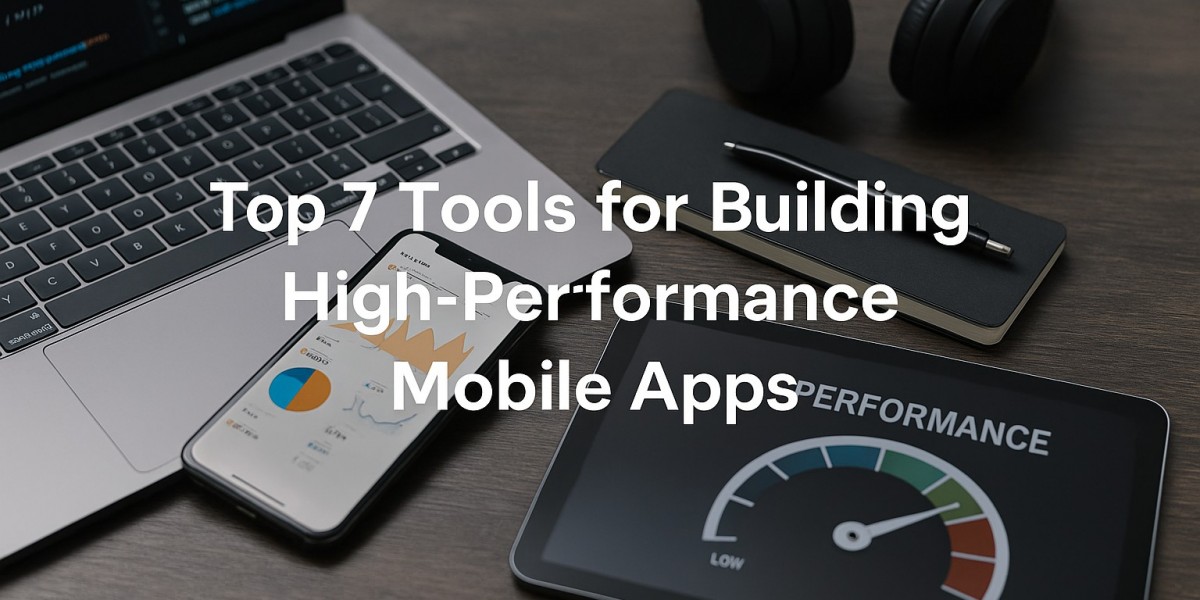In the rapidly evolving world of technology, high-performance mobile apps are no longer a luxury but a necessity. Users expect applications to be fast, responsive, and reliable, regardless of the device they are using. To meet these demands, developers need to choose the right tools for mobile app development. The following seven tools are widely regarded as the top choices for building high-performance mobile apps.
1. Flutter
Developed by Google, Flutter is a powerful UI toolkit for building natively compiled applications for mobile, web, and desktop from a single codebase. Its high performance is attributed to the use of the Dart programming language, which compiles directly to native ARM code, bypassing the need for a JavaScript bridge. This results in smooth animations and a consistent 60fps (or 120fps on capable devices) performance. The framework's hot reload feature accelerates the development cycle, and its rich, customizable widget library allows for the creation of visually stunning and expressive user interfaces that feel native on both iOS and Android.
2. React Native
Backed by Meta (formerly Facebook), React Native has been a long-standing favorite for cross-platform mobile app development. It allows developers to build natively rendered mobile applications using a single codebase of JavaScript and React. While it historically relied on a JavaScript bridge, a new architecture using the JavaScript Interface (JSI) has significantly improved its performance, reducing latency and enhancing app responsiveness. This makes React Native a competitive choice for building high-performance apps, especially for developers who are already familiar with the JavaScript ecosystem.
3. Xamarin (.NET MAUI)
Xamarin, now known as .NET MAUI (Multi-platform App UI), is a Microsoft-backed framework that allows developers to build cross-platform apps using C# and the .NET framework. Its key strength lies in its ability to compile to native code, giving it excellent performance and full access to platform-specific APIs. This approach ensures that apps feel truly native, with a high degree of performance and responsiveness. It's an excellent choice for enterprises and developers deeply invested in the Microsoft development stack.
4. Android Studio
For native Android mobile app development, Android Studio is the official and most comprehensive IDE. It offers a complete suite of tools for building, testing, and debugging Android applications. With first-class support for Kotlin and Java, it provides direct access to all Android APIs, allowing for fine-grained control and optimization of app performance. The built-in emulator, visual layout editor, and performance profiler are invaluable for ensuring that an app is fast, stable, and efficient on every type of Android device.
5. Xcode
Xcode is Apple's integrated development environment (IDE) and the essential tool for building native iOS, macOS, watchOS, and tvOS applications. When combined with the Swift programming language and SwiftUI, it provides an unparalleled development experience for the Apple ecosystem. Xcode's deep integration with Apple's hardware and software allows developers to create highly optimized and high-performance applications that take full advantage of the platform's capabilities. It is the go-to choice for anyone prioritizing a premium, native user experience on Apple devices.
6. Ionic
Ionic is a popular framework for building hybrid mobile apps using web technologies like HTML, CSS, and JavaScript. It's particularly well-suited for web developers looking to transition into mobile app development. While not as performant as native solutions in some cases, Ionic has a rich library of pre-designed UI components that give applications a native-like look and feel. It integrates seamlessly with popular front-end frameworks like Angular, React, and Vue.js, offering a productive and efficient way to build cross-platform apps.
7. Kotlin Multiplatform (KMP)
Kotlin Multiplatform (KMP) is an emerging technology that offers a unique approach to cross-platform mobile app development. Instead of sharing the entire UI, KMP focuses on sharing common business logic, data, and networking code across different platforms while allowing developers to implement platform-specific UIs. This "shared code, native UI" model provides a significant advantage: developers get the benefits of code reusability without sacrificing the native look, feel, and performance of the user interface. It's a powerful solution for teams that want to maintain a native experience on both Android and iOS while maximizing code efficiency.































